Do you have a question about the Airstream 2011 FLYING CLOUD and is the answer not in the manual?
Key safety recommendations and guidelines for trailer operation.
Warning against carrying passengers in the trailer due to lack of seat belts.
Explanation of trailer sway and its causes, referencing further details.
Discusses mold and mold spores, focusing on controlling indoor mold growth via moisture management.
Importance of proper weight distribution for efficient and trouble-free towing.
Emphasizes correct lug nut tightness for wheel security and safety.
Overview of trailer appliances and their operation, referencing manufacturer manuals.
Highlights the importance of tire maintenance for vehicle performance and safety.
Addresses odors and chemical sensitivity from RV materials and combustion by-products.
Explains formaldehyde sources, sensitivity, and the role of ventilation in reducing exposure.
Essential measures to reduce chemical exposure from off-gassing via ventilation.
Recommendation against smoking inside the RV due to chemical release.
Guidance to consult a doctor or health department for formaldehyde health concerns.
Clarifies that chemical gassing is not a defect covered by the limited warranty.
Details the duration and scope of Airstream's limited warranty for trailer components.
Explains limitations on implied warranties like merchantability and fitness for purpose.
Lists specific items and conditions excluded from warranty coverage.
Disclaims liability for indirect damages such as loss of time or use.
Outlines the required steps for owners to obtain warranty service.
States that representations made by anyone other than Airstream are not covered.
Details the process and requirements for transferring the limited warranty to a new owner.
States Airstream's right to make design changes without obligation for prior units.
Specifies the timeframe within which warranty claims or actions must be brought.
Lists items like tires and upholstery as subject to wear and not covered.
Notes that damage from accidents is not covered.
Discusses how trailer abuse and environmental exposure are not covered by warranty.
Outlines the process for obtaining service, including factory and dealer options.
Instructions on reporting safety defects to NHTSA and Airstream.
Lists routine maintenance tasks and their recommended intervals.
Lists recommended parts and lubricants for trailer maintenance.
Covers miscellaneous items and their maintenance requirements.
Provides a log for recording maintenance dates and services performed.
Discusses selecting a suitable tow vehicle with appropriate towing options.
Explains the operation and setup of electric trailer brakes and controllers.
Guidance on properly loading the trailer to ensure safe towing and handling.
Details the process of weighing the trailer to determine load distribution and safety.
Instructions on connecting the trailer to the tow vehicle safely and correctly.
Explains how a load-equalizing hitch distributes weight between vehicle and trailer.
Discusses the use and benefits of sway control devices for trailer stability.
Provides advice for safe towing practices and understanding trailer tracking.
Guidelines for safely passing other vehicles while towing a trailer.
Step-by-step instructions for backing up the trailer with a tow vehicle.
Techniques for controlling trailer sway and fishtailing for safe operation.
A comprehensive checklist of items and procedures before embarking on a trip.
Advice on personal preparation and essential items for motoring.
Recommendations for selecting and preparing a safe overnight parking spot.
Procedures for leveling and stabilizing the trailer for longer stays.
Instructions for connecting to a city water supply for pressurized water.
Information on the trailer's waste water system and tank management.
A list of items that should not be disposed of in the toilet or drains.
Details on connecting to an external power source for the trailer.
Information on connecting a generator to the trailer's electrical system.
Location and use of the trailer's cable television connection.
Advice and precautions for traveling in sub-freezing temperatures.
Discusses condensation and humidity issues during extended trailer use.
Practical tips and methods to prevent or reduce condensation inside the trailer.
Explains what molds are and the conditions that contribute to their growth.
General safety advice, including operating exits and checking windows.
Guidelines for washing, waxing, and removing stains from the trailer's exterior.
Care instructions for maintaining the appearance and condition of aluminum wheels.
How to use and care for the exterior shower unit.
Instructions for operating and securing the main and screen doors.
How to deploy, retract, and secure the trailer's entry step.
Maintenance of windows, seals, and operation of the front stoneguard.
Information on the function and maintenance of front corner wrap protectors.
Instructions for operating the awning and precautions against weather damage.
How to measure and set the correct hitch ball height for towing.
Step-by-step guide for connecting and securing the trailer coupler to the hitch ball.
Information on the trailer's axle system, alignment, and wheel bearings.
Specifications and customer responsibility for axle alignment.
Details on the Nev-R-Lube bearing system for trailer wheels.
Procedures for inspecting and servicing Nev-R-Lube wheel bearings.
Explanation of electric brake system synchronization and controller setup.
Guidelines for ensuring proper synchronization and adjustment of electric trailer brakes.
How to operate and maintain the trailer's power tongue jack.
Steps for replacing the power head unit on the trailer's jack.
Regular maintenance tasks for various exterior components.
Procedures for changing a tire and important safety warnings.
Explains the impact of tire pressure on vehicle performance and safety.
Guidelines for maintaining correct tire inflation for optimal performance and safety.
Details the risks and consequences of under-inflated tires.
Discusses the negative impacts of overloading tires on the RV and its components.
Procedures for weighing the trailer and tow vehicle to ensure safe loading.
General advice for maximizing tire life and ensuring safe operation.
Practical advice for maintaining tires, including pressure checks and inspection.
How to inspect tires before trips and during storage periods.
Considerations when replacing trailer tires, including size and load capacity.
Emphasizes the importance of proper wheel nut torque for safe towing.
Information on accessing the spare tire and the recommended tire rotation schedule.
Explains cleaning codes (WS, S, W) for different upholstery fabrics.
Instructions for cleaning the interior aluminum skin, similar to exterior.
How to properly clean and maintain drapery materials.
Cleaning recommendations for the trailer's countertop surfaces.
Methods for cleaning and maintaining vinyl interior coverings.
Instructions for cleaning interior sink fixtures.
How to clean the fiberglass shower stall unit, including stain removal.
Steps for converting the lounge sofa into a bed for sleeping.
How to use the dinette and convert it into a bed.
Instructions for opening and using the folding dinette table.
Explains how to use the monitor panel to check tank levels and battery status.
How to operate the water pump and its interaction with water pressure.
Information on operating and maintaining exhaust fans and roof vents.
Guidance on using the flexible shower head for water conservation.
Recommended method for cleaning linoleum flooring.
Location and function of remote switches for water pump and water heater.
How to operate interior lighting fixtures, including wall switches.
Recommendations for safely and efficiently storing items inside the trailer.
Information on the smoke alarm, battery replacement, and lifespan.
Explains the LP gas detector, its alarm triggers, and safety actions.
How to operate, test, and understand the LP gas detector.
What low voltage and component failure look like on the detector.
Guidance on checking and operating the fire extinguisher safely.
Emphasizes common sense safety and precautions with flammable materials.
Instructions and warnings related to the carbon monoxide alarm system.
Details about the CO alarm's limitations and proper usage.
Explains what carbon monoxide is, its sources, and dangers.
Describes the signs and symptoms associated with CO poisoning.
Warns about disorientation from CO poisoning and the need for testing units.
A section for user-specific notes regarding the trailer's interior.
Introduction to the LP gas system and its components.
Details on the trailer's LP tank fill valve and its features.
Explanation of the two-stage automatic gas regulator and its indicators.
Step-by-step procedure for safely removing and installing LP gas bottles.
Essential safety rules for handling and using LPG containers and appliances.
How to fill and use the trailer's self-contained water system.
Procedures for cleaning and disinfecting the potable water system.
How the water pump operates, its pressure switch, and city water hookup.
Instructions for connecting to and using a city water supply.
Details the locations of freshwater and line drain valves on various trailer models.
Methods for draining the fresh water tank using the pump or drain valve.
How to drain the water heater for maintenance or winterizing.
Comprehensive steps for winterizing the trailer's water systems.
Instructions for bypassing the water heater for winterizing or normal operation.
Specific locations of water heater by-pass valves for different trailer models.
Instructions for bypassing the water heater on the 30-foot model.
Information on the trailer's waste tanks and dump valves.
Recommendations for using deodorizers and maintaining waste holding tanks.
How to check holding tank levels using the monitor panel.
Procedures for managing waste tanks when connected to a sewer outlet.
Recommended cleaning agents for the plumbing system.
How to use the black tank flush system for cleaning.
Instructions for operating and maintaining the RV toilet.
How to clean and maintain the kitchen faucet.
How to clean and maintain the bathroom faucet.
Overview of the 12-volt electrical system and its components.
Function and operation of the battery disconnect switch.
Information on lead-acid battery maintenance and freezing prevention.
Details on optional glass matt batteries and their characteristics.
Guidelines for storing batteries to ensure longevity and prevent discharge.
Information on the converter, 12-volt distribution, and 110-volt distribution panel.
Identifies the sources supplying 12VDC power to the system.
How the MagneTec 7300 series power converter functions.
Location and operation of the 120-volt AC circuit breaker panel.
Explanation of the converter's fan cooling system for reliable operation.
How the converter transforms AC to DC and procedures for testing its output.
Information on the optional inverter system for converting battery power.
A diagram illustrating the wiring of the 12-volt DC circuits.
Instructions for raising, rotating, and lowering the TV antenna.
Recommended practices and warnings for operating the TV antenna.
Procedures for lubricating the TV antenna's elevating and rotating mechanisms.
How the TV booster amplifies signals and the function of the 12V outlet.
Wiring and installation procedures for satellite dish antenna systems.
How to operate the antenna and adjust the TV booster settings.
Information on the optional solar panel system and its components.
Details on the factory-installed pre-wire system for solar panels.
Location and use of the 12V power port and RCA jack connectors.
How the trailer operates on 110-volt city power and its protection.
Explanation of the converter's role in managing 110-volt and 12-volt power.
Importance and function of GFCI protection for electrical safety.
Procedure for testing the GFCI breaker monthly to ensure functionality.
How to test GFCI receptacles in the trailer for proper operation.
General maintenance recommendations for all trailer appliances.
How to operate the air conditioner for optimal cooling and efficiency.
Instructions for operating the furnace and safety precautions.
Guidance on using the trailer's gas range and related safety warnings.
Information on removing microwave ovens for service by certified technicians.
How the refrigerator works and the importance of leveling for cooling.
Importance of vehicle leveling for refrigerator cooling and fan usage.
Instructions for operating the water heater and safety warnings.
How to use the electronic ignition switch for the water heater.
Safety measures related to water system pressure during heating.
How to operate the high-volume roof vent for ventilation.
Using the thermostat to control the roof vent fan automatically.
Steps for cleaning the screen and components of the roof vent.
Description of the Micropulse Systems Monitor and its sensors.
Details the wiring connections for the monitor panel sensors.
Instructions on how the monitor displays tank levels and system conditions.
How the monitor panel indicates the status of different systems.
Procedures for getting precise readings from the tank monitoring system.
A section for user-specific notes regarding appliances.
A table listing various dimensions, weights, and capacities for trailer models.
Explains how to read the Cargo Carrying Capacity tag for load limits.
Details the information found on tire and loading tags for vehicle specs.
Guide to measuring and setting the correct hitch ball height for towing.
Specifies tire sizes and their recommended cold inflation pressures.
| Category | Motorhomes |
|---|---|
| Year | 2011 |
| Make | Airstream |
| Model | FLYING CLOUD |
| Sleeping Capacity | 4 |
| Fresh Water Capacity | 39 gallons |
| Black Water Capacity | 39 gallons |
| Water Heater Capacity | 6 gallons |
| Length | 25 ft |
| Weight | 5, 500 lbs |
| Gray Water Capacity | 39 gallons |
| Exterior Height | 9 feet 9 inches |
| Width | 8 ft |
| Height | 9 feet 9 inches |
| LP Gas Capacity | 30 lbs |
| Furnace BTU | 25, 000 BTU |
| Air Conditioner BTU | 15, 000 BTU |
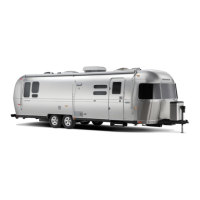
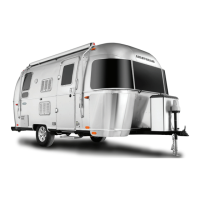
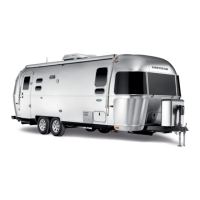
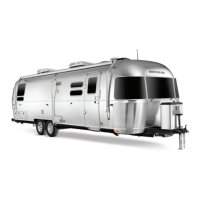
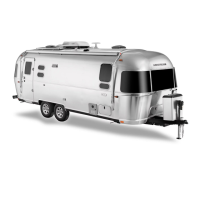
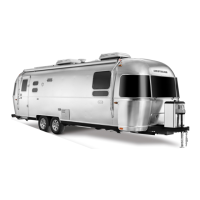
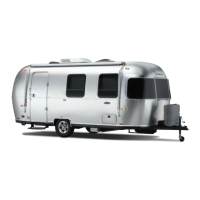
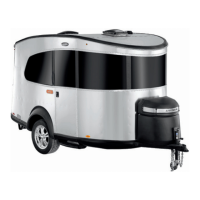
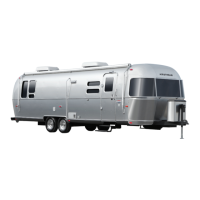
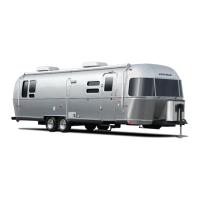
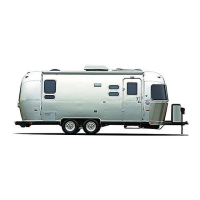
